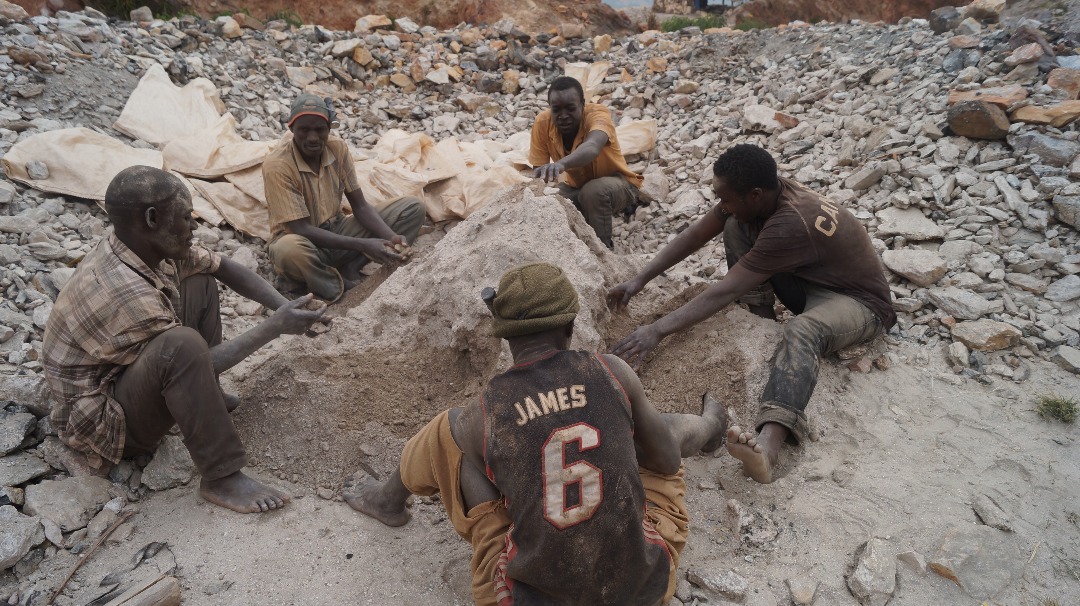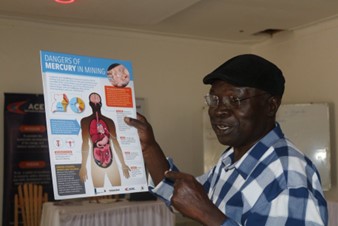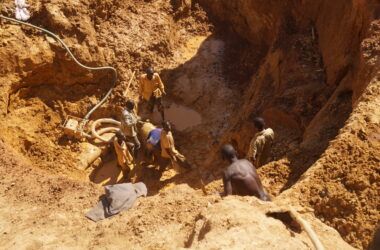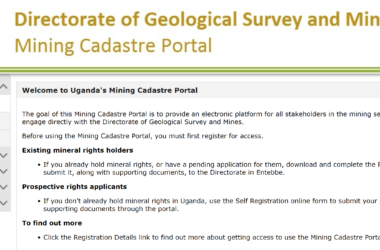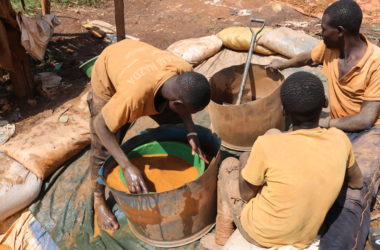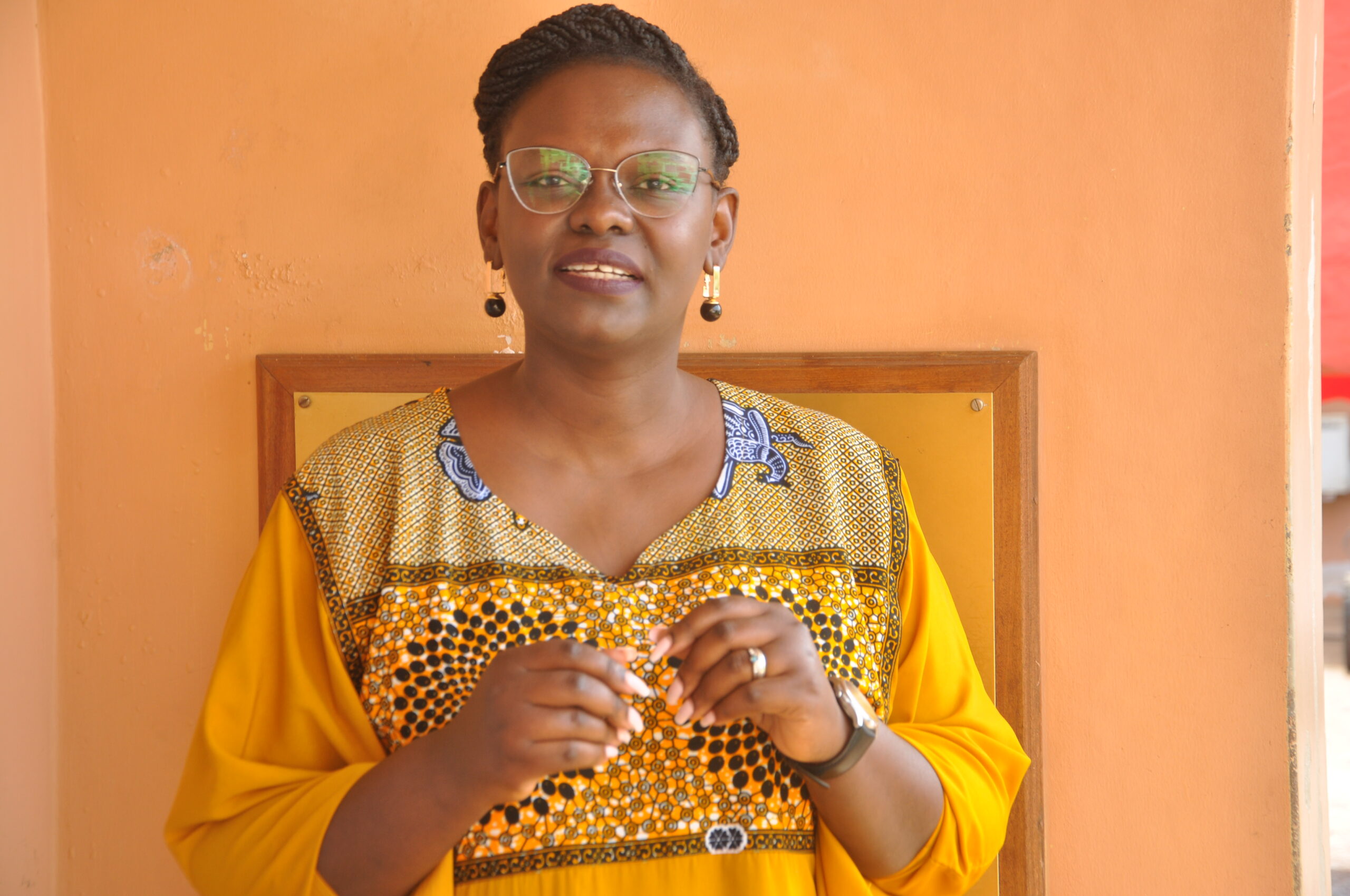In the draft Mining and Mineral Bill, 2019, the Government of Uganda proposes the establishment of mineral buying and auctioning centers across the country.
The establishment of the buying centers will guarantee Artisanal and Small-scale Miners transparent and competitive selling prices and, to their advantage, cut out the middlemen who buy their minerals at prices much lower than the market price. Presently, the ASMs are at the mercy of middlemen who in effect are the ‘market’ and hence decide the daily market prices for the minerals supplied. The ASMs lack the bargaining power and must therefore accept what they are offered sometimes not breaking even.
The Ugandan government believes that buying centers will be beneficial to ASMs if conditions for sale of minerals to the buying centers are made favorable for them. ASMs are responsible for 90% of the mining activities undertaken in Uganda.
To promote these commodity trading hubs, the Government is opening up space for ASMs to acquire Mineral Dealers Licenses under Clause 138 of the Draft Mining and Minerals Bill, 2019. The Bill further caters for: (a) the type of minerals to be traded; (b) storage facilities for the minerals; (c) office location; and (d) financial and technical resources available.
In addition, the trading centers will ensure that the taxes and revenue realized from the mineral sector will be collected by the responsible authorities, in the process minimizing current revenue leakages in the mineral sector. According to data from the Directorate of Geological Surveys and Mines, over UGX 2.13 trillion worth of gold was exported out of Uganda in the financial year 2016/2017. During the same period the Customs and Excise Department at the Uganda Revenue Authority (URA) indicated that 5,316 kilograms of gold had been exported out of the country all valued at UGX 698 billion.
These discrepancies shed light on the level of smuggling that takes place in Uganda’s gold industry with the precious mineral being illegally imported and re-exported by middlemen and smugglers with limited government intervention.
The recent closure of the Uganda-Rwanda border in 2019 which was brought about by political conflict between the two governments has shed more light on the rampant unabated cross border mineral smuggling between the Ugandan and Rwandan borders which dates way back to the Amin government of the 70s according to some locals.
A company which mines Tin in Ntungamo District, considerably the largest Tin producer in Uganda whose 100% mineral production is undertaken by artisanal miners is particularly in the spotlight. This company has reportedly been declaring an average of 90 Kilograms of Tin per day to the local authorities. However, because there is no transit route for the Tin now with the closure of the Rwanda-Uganda border, the company is nor reporting daily production of over 600 Kilograms. As such, the supply is far outweighing the demand and the company has slashed the price of Tin, leaving the more than 1,000 ASM suppliers stranded. This is a classic example of a crisis that a buying centre would avert.
The Ntungamo example above reveals that illicit trade in mineral commodities is mainly carried out by both illegal and licensed mining companies claiming lack of market for their commodities in Uganda. It is also believed that these centers especially those dealing in Conflict Minerals such as Tin, Tantalum, Tungsten and Gold (3Ts&G) will enable the Ugandan government to promote responsible mineral supply chains in accordance with acceptable international standards of the OECD Due Diligence Guidance for Responsible Mineral Supply chains and the ICGLR Regional Certification Mechanism frameworks.
The mineral trading hubs will also enable the traceability of both the actors and minerals along the entire mineral value chain; from point of origin to point of export. This will provide accurate records of different aspects of the mining sector which will open up the Ugandan mineral market and commodities to competitive international markets increasing output and revenue from the sector.
Performance of Mineral Trading Hubs in other jurisdictions:
In March last year, the Tanzanian Government set up 28 Mineral Trading Hubs in the booming mining districts across the nation. This was a strategy by President John Magufuli to curb black market trade and smuggling of minerals, tax evasion as well as allow for transparency in the mineral sector.
According to reports from Reuters however, this has not manifested fully into what the government hoped it would be. The hubs by law only buy minerals from licensed mineral dealers who are awarded a license after among other requirements, a payment of about USD 44. Most ASMs cannot afford that cost given that they have other recurring expenses like rent to the land owners at the site on which they mine.
Reuters further reported that by the end of October 2019, the hubs had made about USD 202 million since their inception in March of the same year. This was a mere 13% of the USD 1.5 billion traded in gold in 2018 which implied that large quantities of the mineral were still being illegally exported. This however does not take away from the fact that the country is realizing much more revenue than it was in the past years with the country’s Central Bank reporting a 23% rise in gold exports in the year 2019. Such significant percentage increases in the country’s leaking revenue base would be welcome in Uganda.
Cameroon took a different path with the Artisan Mining Support and Promotion Framework (CAPAM). This initiative was set up in 2003 by the Cameroonian government in a bid to aid the contribution of the artisanal mining sub sector for the growth of the country. In order to achieve this, one of the actions CAPAM adopted was to fight against smuggling. CAPAM approached the fight against mineral smuggling by placing mineral agents at mine sites who supervised and recorded the output of the mine sites. These agents ensured that the share which should be returned to the government from the mine site yield as stipulated by the production sharing contract applied in the sector was actually transferred to the official circuits. Business in Cameroon, a local magazine reported that in 2017, this program saw over 255 kgs of gold returned to Cameroon’s Ministry of Finance.
The Ghanaian Government in 1963 similarly set up the Precious Minerals Marketing Company (PMMC) which among other functions plays the role of buying and selling precious minerals as well as appointing licensed buying agents for the purchase of precious minerals produced by small-scale miners. The company operates in all the gold and diamond mining areas where they are able to engage the small-scale miners.
Similarly, Uganda’s Mining and Mineral Bill, 2019 proposes the set-up of a national mining company. Could this proposed National Mining Company be the designate chief buyer of all mineral commodities? The authors have reservations on the establishment of a Mining Company which will be articulated in another paper. Clause 23 of the Bill however states its roles will be to handle the state’s commercial interests in the mining subsector as well as manage the marketing of the country’s free-carry interests of minerals received in kind.
It should also concern the nation and the different actors in the sector that these mineral trading centers are being proposed without the undertaking of prior feasibility studies in order to make a practical business case for them. The risk is that these regional trading centers could instead become “white elephants” with limited output production to sustain their operations. Mining is a cyclical sector largely dependent on production booms and busts dictated by uncontrollable forces of demand and supply. As a country, Uganda has also in the past experienced limited investment in mineral exploration which undercuts the government’s good intentions in the absence of the Joint Ore Reserves Committee (JORC) Certified availability of commercially exploitable mineral reserves to sustain these proposed regional mineral commodity trading hubs, causing financial loss to government through management and maintenance costs.
To manage the risk associated with this initiative, we propose that the Uganda Government engages certified mineral exporters as well as the private sector to establish and manage these trading centers to prevent financial loss. This is the case in Nigeria where there are over 90 private-owned mineral trading centers of which only 10 are state owned. Authorized persons (mineral dealers) are required to sell minerals to these entities, after which they are issued receipts which are produced for inspection exercises.
However good intentioned the government’s interventions are, governments have not been known to have the fiscal discipline that comes with managing unpredictable mineral commodity markets. It is on this basis that we recommend that the Ugandan government further investigates the commercial viability of these proposed mineral commodity market hubs by undertaking further exploration in collaboration with the private sector and international development partners, undertaking feasibility studies and securing JORC certified data of the country’s mineral reserve base for each designate region focused on the specific mineral commodities in those regions. Government should also engage the private sector through the Chamber of Mines and Petroleum, secure expert advisory and roll out these commercial hubs in phases based on bankable economic guarantees.
Programs Officer,
Africa Centre for Energy and Mineral Policy (ACEMP)

